
“Time Is Muscle”
This is an expression we hear frequently from our customers who are members of their hospital code response team. It emphasizes the importance of a rapid response when treating patients experiencing a cardiac arrest. As you probably know, in cardiac arrest, the heart is no longer sending oxygenated blood to vital organs, including the heart itself! The heart is a muscle that needs oxygen in order to function. During every minute that passes when the heart is not properly perfusing oxygenated blood, it is estimated that 10% of the heart’s muscle tissue dies. This means that after five minutes of a non-perfusing rhythm, half of the heart’s tissue may already be gone – “TIME IS MUSCLE”. Certainly, this is a far less than ideal situation when trying to preserve life!
Our slogan is “Better Carts For Better Outcomes”. That means that Waterloo carts are designed to keep vital equipment and supplies at your fingertips to help reduce treatment time and improve patient outcomes. Through our various cart and accessory configurations, we are able reduce the time needed to access lifesaving equipment and supplies, thereby helping your team save more lives!
Much of our promotion this first quarter of 2023 has been centered around our code carts, and with good reason. Code carts are the very foundation of the Waterloo Healthcare product line and the cart that we are most proud of due to the role it serves in saving lives. As our slogan implies, our carts are purpose-built to reduce the time needed to find, access, and use lifesaving supplies in a medical emergency.
We are proud of the role our products play in the chain of survival and strive to continue that legacy through product innovation in 2023 and beyond!

Custom Carts for Innovative Medical Teams
One size doesn’t necessarily fit all when it comes to medical procedure carts It’s something we encounter every day while building our products which help the world’s most innovative medical teams do their jobs. At Waterloo Healthcare, we understand, and that’s why we allow you to customize your carts for their specific purposes. To illustrate this point, let’s look briefly at code carts and anesthesia carts – two very different carts for very different purposes.
- Code carts usually have non-restrictive locks that show tamper evidence (often through plastic tamper evident seals). Anesthesia carts tend to have advanced electronic locks with the capability to track user access and require dual credentials for the narcotics drawer.
- Code cart accessories include cardiac boards, oxygen tank brackets, portable suction shelves, IV poles, sharps container brackets, etc. Anesthesia carts have lots of tilt bins, tape dispensers, utility bins, power strips, etc.
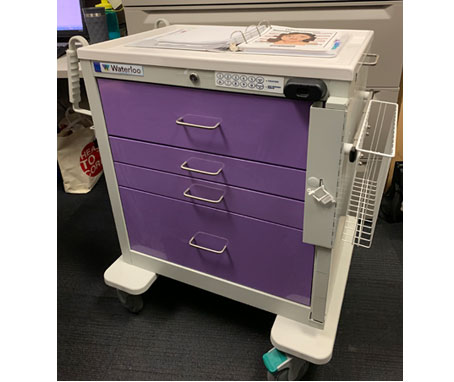
- Code carts are typically either all red or all blue so the “rapid response team” in a hospital can identify them quickly from any viewing angle. Anesthesia carts, in general, have a light gray cabinet and drawer fronts in any of our 16 color choices or wood grain design. Unlike code carts, there are no specific colors recommended when it comes to anesthesia carts.
Each Waterloo Healthcare cart has eight main customizable attributes:
- Cart height (36”, 39”, 42”, or 45”)
- Cart width (23” (Junior), 29” (Standard), or 36” (Wide)
- Cart material (steel or aluminum)
- Drawer configuration (any combination of 3”, 6”, 9”, or 12”H drawers)
- Cart cabinet color (light gray, red, electric blue, or wood grain design)
- Drawer front color (16 available colors or wood grain design)
- Locking mechanism (more than 7 lock styles available from simple key locking to advanced electronic locks for use with controlled substance drawers)
- Caster height (standard 5” casters, 4” and 3” options also available)
Beyond your options with our eight key cart characteristics, Waterloo carts can also be customized for your unique needs via available accessories, such as IV poles, swivel shelves, tilt bins, oxygen tank brackets, and more. As a result, the configuration options are virtually limitless!
Going back to the eight main attributes of a Waterloo cart, below we share some questions and points you’ll want to consider so we can build you the most appropriate one for each need your facility has.
Cart Height & Width
Often, the first consideration for our customers is space restrictions. Does this cart need to fit in a very specific location in your facility, like under a countertop in an alcove? If so, that will dictate your maximum cart size and some configuration options. We recommend you first choose the cart size that fits your space requirements, and then determine the optimal drawer configuration that fits within that cart cabinet.
If space restrictions are not a concern, then you have a bit more freedom in your configuration options. In this case, you simply determine the number of drawers, as well as the size of each drawer, that you need, and then select the cart cabinet that fits that drawer configuration. In other words, let your storage requirements drive your cart size!
Cart Material
Cart material is another important consideration. Do you need lightweight and highly-durable aluminum, or would a more economical steel construction work for your needs? Aluminum is ideal for carts that will be moved frequently as they are lighter in weight and easier to maneuver. Steel is a better option when managing your budget is a bigger concern than cart mobility. While Waterloo aluminum carts are still VERY budget friendly, our steel carts are even more so, and perfect when you need to strike the best possible balance between budget and performance!
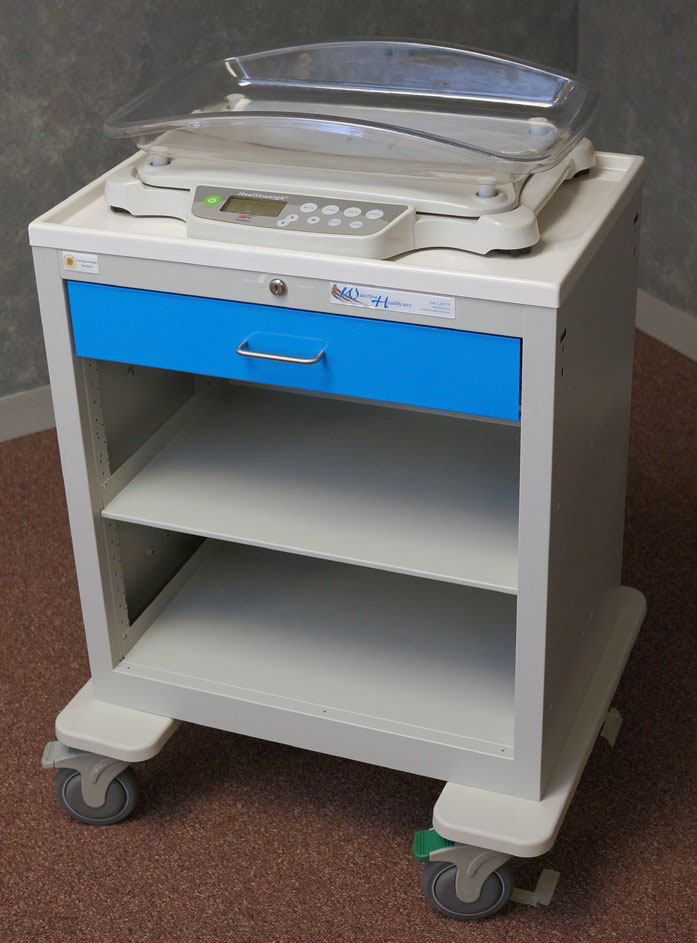
Drawer Configuration
Drawer configurations on Waterloo carts really allow you to organize needed supplies in a thoughtful and easy to access manner. Deep drawers stocked with a wide variety of small items tend to get overfilled, making it difficult to find what you need quickly since items are piled on top of each other. It’s better to configure your cart with smaller drawers that offer just enough depth to store extras of each item, but not so deep that staff are encouraged to mound unrelated or dissimilar items on top of each other. A best practice is to “right size” your drawers so that needed items are easy to spot in an open drawer without the need for digging.
Cart & Door Front Colors
Cart cabinet and drawer colors are completely discretionary and do not impact cart pricing as long as you choose from our available drawer and cabinet colors. Our customers can match colors to their needs and preferences, and we can even accommodate custom requests such as mixing and matching our 16 available drawer front colors (or even our wood grain pattern) on a single cart. This can help staff quickly identify drawers by procedure based on color – white could be your airway drawer, yellow could be an IV drawer, and so on. Color coding is a common practice that can speed treatment for your patients.
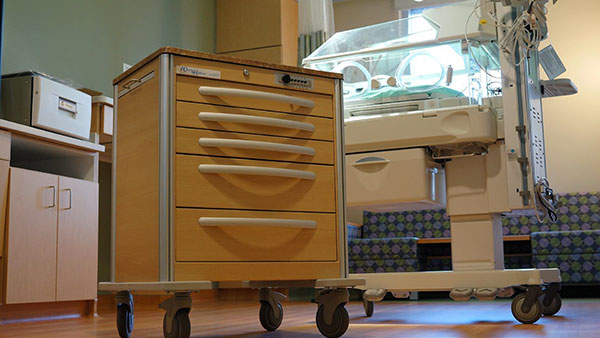
Locking Mechanism
The wide variety of locks available through Waterloo allows you to further customize your cart to match your security requirements. Carts with controlled medications require more advanced locking options than those with general patient supplies. Should you need drawers that automatically lock, have the ability to track user access, or need dual credential access for controlled substance drawers, our electronic lock options have you covered. If you need to simply show tamper evidence, we have locks that allow use of plastic tamper evident seals. If a simple key lock will do, we have you covered there as well.
Caster Height
Finally, our caster options make it possible for you to reduce the height of your Waterloo Healthcare cart should you have height-restricted applications. This is most common in-patient rooms or areas where you need mobile storage options that fit under a countertop. We can swap in shorter casters to get your cart to the height you need!
Based on the wide variety of configuration options above, we encourage you to contact your Waterloo Customer Service Team so we can guide you through the options. Simply call 800-833-4419 or email us and we’ll be happy to help!

150 Series Electronic Locks
The new Waterloo Healthcare 150 Series Electronic Locks are now programmed with the ability to adjust the auto relock timer using the keypad on the cart!
One of the primary advantages of an electronic lock is the ability to have the cart re-lock itself after a predetermined amount of time. This allows clinicians to focus on patient care as opposed to remembering to lock their cart after use. Our electronic locks are pre-programmed from the factory to re-lock after 10 minutes. With our new 150 series lock, relock timers can be now adjusted anywhere from one second to infinitely open simply using the keypad on the cart!
Previously relock timers were only adjustable via lockmanager software running on a laptop computer. Being able to make timer adjustments at the cart adds a new level of convenience for clinicians!
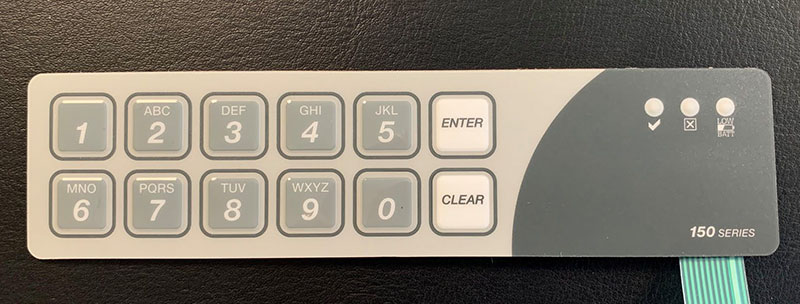
Women Pioneers in Cardiology
To recognize Women’s History Month, and to go along with this newsletter’s “Time Is Muscle” about our code carts and how they can help in a cardiac event, we thought it appropriate to share just one of the names and achievements of women who made strides in cardiology. It would take pages and pages to share every single detail about the amazing women in the field and their medical careers. You can always look up more female cardiologists online to learn about each one and their entire story, and we encourage you to do so!
Maude Abbott was already a trailblazer by being one of the first women to earn a BA from McGill University after she was previously rejected from attending because she was a women (1890 as valedictorian), graduate from medical school in Canada as the only woman in Bishop’s University graduating class of 1894, and winner of the Chancellor’s Prize at her alma mater. She had lofty ambitions, but because she was a female, her accomplishments in schooling were not considered equivalent to that of a male, and she was unsuccessful in her search for employment at a hospital in Canada.
Unfazed, she opened her own medical clinic in 1897 that focused on women and children, and conducted research in pathology with a focus on heart disease in newborns. This innovative work led her to worldwide recognition for her insights on heart defects and an invitation to write the “Congenital Heart Disease” chapter in a medical book helmed by a man and led her to be the global authority (at the time) on congenital heart disease – quite impressive achievements for a woman in 1905. Throughout her life, she won numerous awards and wrote almost 150 books and papers, in addition to lectures on her chosen specialty. In 1936, the year she retired, she wrote the “Atlas of Congenital Cardiac Disease”, which was based on more than 1,000 records of patients. To this day, it is recognized as an important resource for cardiologists the world over.
Dr Abbott inspired many future doctors, including Dr Helen B Taussig. She was a graduate of Johns Hopkins School of Medicine, and many consider her founding mother of modern pediatric cardiology. Basing her work on Dr Abbott’s, she came up with an operation to repair the congenital heart defect that caused “blue baby” syndrome, which had its first successful outcome in 1944. She was the first woman to be the American Heart Association’s President (1965).
Today, women are still underrepresented in cardiology, but there are organizations like Women in Cardiology with a goal of changing that through mentoring programs, networks, and support.
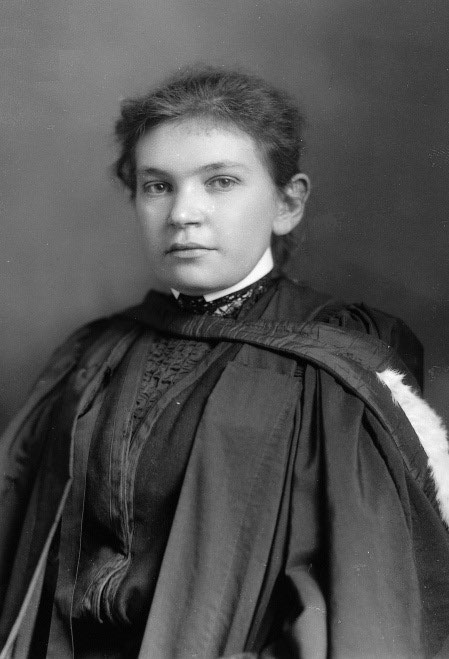
Maude Abbott (March 18, 1869 – September 2, 1940)
Waterloo Healthcare is dedicated to providing quality, flexible medical cart solutions that accommodate any clinician’s needs, and our team is always available to help design the cart that’s right for you!






